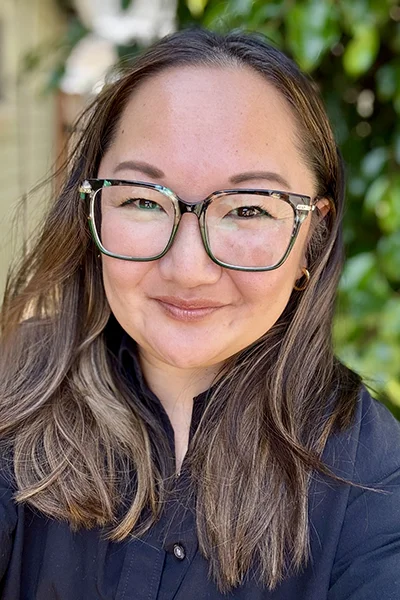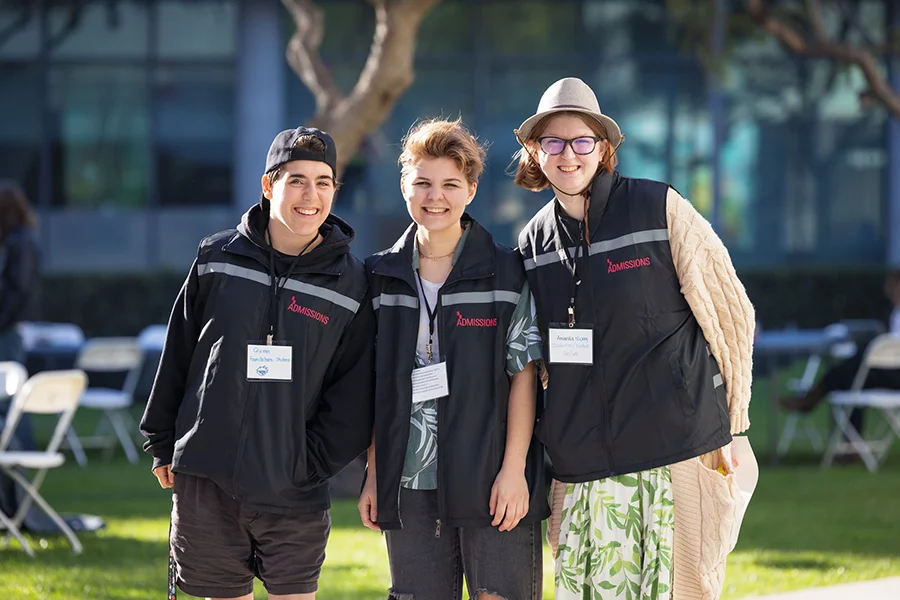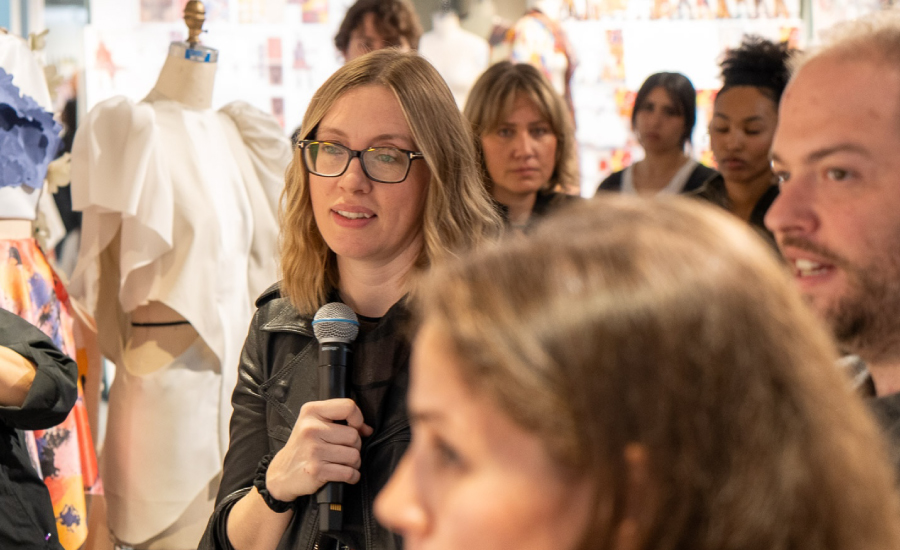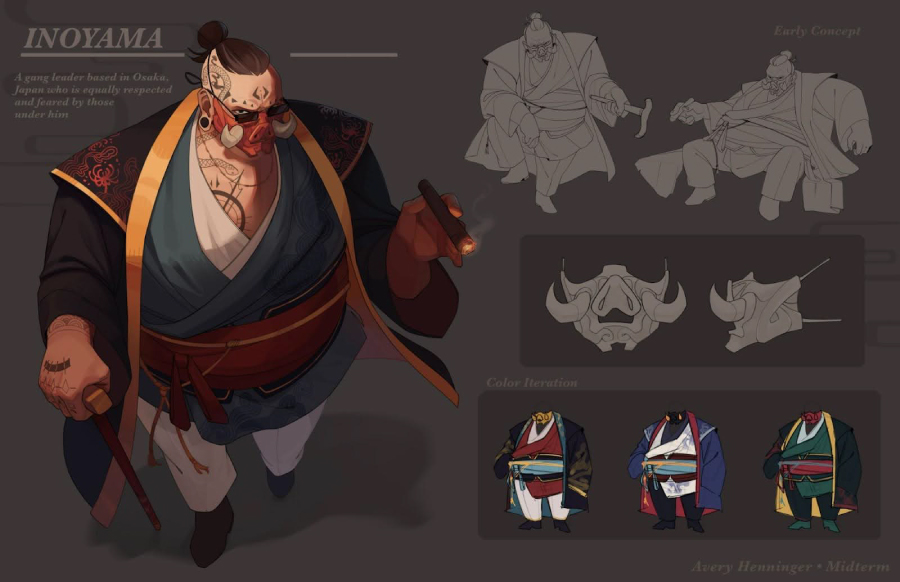Five Tips to Make Your College Application Scholarship-Worthy
Otis College’s Vice President of Admissions and Financial Aid offers strategies for bringing your truest self into your work and your application.

I’ve been in art and design college admissions for over 15 years and have reviewed thousands of portfolios along the way. Some of the portfolios I reviewed 10 years ago have stuck with me because they were that unique or impactful. That is the kind of impression you want to make.
When you apply to Otis College of Art and Design, your application is automatically considered for a merit scholarship, which is a financial award based on an applicant’s talent and ability as demonstrated in their application and portfolio, rather than economic need.
The five strategies below will help you put your best work forward and maximize opportunities to receive funding for your education at Otis.
1. Show Us Who You Are in Your Portfolio
Your portfolio is the heart of your application. We review hundreds of submissions, so it’s essential to share work that reflects your unique voice and vision. Don’t submit work you think admissions counselors want to see. Creative risk-taking resonates far more than trying to fit a perceived mold.
Focus on what excites you right now—your most current work and the ideas you’re actively exploring. Your portfolio should reflect where you are as an artist or designer today, not a retrospective of your entire journey.
Consider including a focused selection of recent work that shows both technical skill and conceptual thinking. You can even include pages from your sketchbook—these often reveal your creative process in important ways. Quality always trumps quantity—it’s better to present 10-12 exceptional pieces of current work than 20 pieces that were made several years ago.
Each school you’re applying to might have different portfolio requirements. Don’t overlook that.

2. Details Matter
Nothing undermines a strong application faster than not following instructions or making careless errors. Typos in your portfolio descriptions, personal essay, or application forms signal a lack of attention to detail and can overshadow even the most impressive work.
Proofread everything you’re submitting multiple times. Read your personal statement out loud to catch awkward phrasing. Check that all image files are properly oriented and of a high-resolution. Verify that dates, measurements, and medium descriptions are accurate.
Small mistakes can create doubt about your professionalism and commitment. Taking extra time to ensure everything is polished shows respect for the admissions counselors’ time.
3. Your Personal Statement Should Reveal What Drives You
Your personal essay or artist statement is your chance to help admissions counselors understand the person behind the portfolio. This isn’t the place for generic statements about “always loving art” or vague claims about your passion.
Dig deeper. What specific experiences shaped your creative perspective? What themes or questions keep appearing in your work? What do you hope to explore or achieve through your education?
Be honest and specific. Share a meaningful story or moment that influenced your artistic direction. Discuss the ideas, issues, or emotions that fuel your creativity. Let your authentic voice come through—this is where you can make a genuine connection with us and make your application memorable.
4. Get Feedback But Trust Your Instincts
Getting outside perspectives on your application before submitting it is invaluable. Sign up for one of Otis College’s portfolio reviews with an Admissions Counselor; it’s a great way to see if you’re on the right track. After that initial review, email us with any questions and keep us updated on how you’re progressing on your application.
You might also ask trusted teachers, mentors, friends, or family members to review your work and provide honest feedback. Different reviewers will offer different insights—some technical, some conceptual, some about presentation. Listen carefully to recurring themes in the feedback you receive, as these often point to real areas for improvement.
However, remember that this is ultimately your application. Balance openness to feedback with confidence in your own judgment.

5. Stay True to Your Artistic Identity
As you refine your portfolio and application, you might feel tempted to second-guess your choices or try to make your work appeal to everyone. Resist this urge.
The most compelling portfolios have a clear point of view. They reflect an artist or designer who knows who they are and what they want to say. We’re looking for potential and originality, not perfection or conformity.
Make sure your portfolio tells a complete story about who you are as a creative person.
Final Thoughts
Applying to Otis College requires time and effort. Giving yourself that space can make all the difference. We’re not looking for students who can do everything perfectly or who have mastered every technical skill. We can teach technique—that’s what our talented instructors are here for. What we’re really looking for is how you think, what ideas drive your work, and how creatively you can execute those ideas with your current resources and skills. Show us your creative problem-solving skills, your unique perspective, and your passion for making.
We’re investing in people, not portfolios. Show us not only what you’ve created, but who you are and who you’re becoming.
Also, merit scholarships are only one type of funding available to you. Make sure you submit the Free Application for Federal Student Aid (FAFSA) to be considered for federal and state financial aid and look into additional scholarships.
Yoi Tanaka (she/her) is the Vice President of Admissions and Financial Aid at Otis College.
Contact an Otis College admissions counselor
Register for a financial aid info session
Related News



